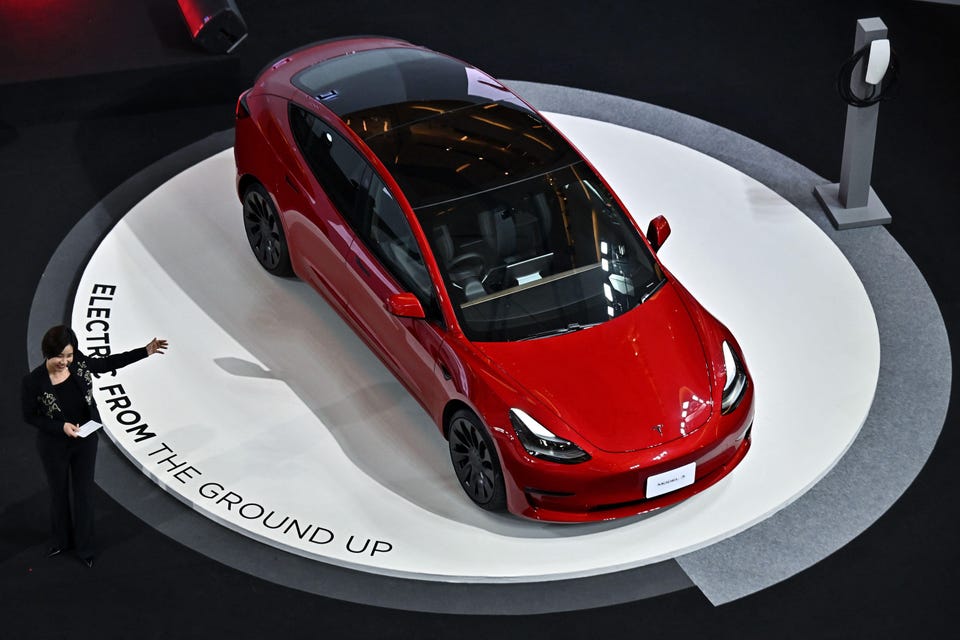What Exactly Is Tesla’s Project Highland And Why Do We Need It?

There is huge anticipation of Tesla’s next generation platform and the potential arrival of the much-talked-about $25,000 model that will be derived from it. But there’s another Tesla update in the pipeline due to land before that. It’s called Project Highland, and these are the details we have about it so far.
The first thing to underline is that Project Highland is not a whole new Tesla vehicle, but the next evolution of the existing Model 3, which could have implications for the Model Y. Where the Model 3 was Tesla’s first popular automotive hit, selling in spades, it has subsequently been eclipsed by the Model Y SUV, which is now outstripping it in most markets. For example, in 2022, the Model Y sold 35,551 units in the UK and was the third bestselling car across all fuel types. But the Model 3 only sold 19,071 units, although it was still the number two EV and way ahead of any other electric vehicles across the year.

To maintain interest, the five-year-old Model 3 clearly needs an upgrade, and Project Highland is supposed to deliver that. One clear intention is to cut production costs, which presumably will enable a reduction in price. Initially Project Highland will focus on cars produced at Tesla’s Shanghai plant, which is pausing manufacturing until the end of February for retooling, but the changes will also be reflected in cars produced in Freemont, California. There is no word yet about the German Tesla production facilities.
The cost will be reduced in part by decreasing the number of components used in the vehicle’s interior. But there will be exterior changes as well. Spy shots of Tesla Model 3 test mules caught out in the wild have shown the vehicle with its front and rear wrapped. This has led to speculation that a major part of the Project Highland update will revolve around the front and rear sensor package. It’s also likely to include a refreshed front and rear appearance.

The front and rear sensors could come alongside the introduction of Tesla FSD Hardware Version 4.0, the design of which was recently leaked. This is rumored to include an upgrade of cameras from 1.2Mpixels to 5Mpixels alongside LED flicker mitigation, which improves the reading of digital signs. The hardware computer has 12 camera inputs, where current Teslas only have nine cameras. One theory is that two of the extra cameras will be placed near the front of the car facing sideways, to counteract a blind spot from this direction. The B-pillar cameras are also expected to include heaters that will help reduce fog buildup behind the glass covering.
The FSD 4.0 computer itself is expected to be up to four times faster than the version 3.0 hardware. This will come from 20 processing cores compared to 12, running at up to 2.35GHz. As before, two nodes, each with this amount of processing power, will be provided for redundancy. However, the FSD 3.0 redundancy has more recently been sacrificed to enable more features via software upgrades.
Surprisingly, FSD 4.0 also includes HD Radar, when Elon Musk had claimed that in the future Tesla cars would rely on cameras alone. However, this radar, called Phoenix, is much higher resolution than the one that was removed from the Model 3 and Y in 2021. The Phoenix radar will also include a heater to protect it from environmental conditions, in this case snow and ice blocking the signal.

The upgraded sensors and FSD computer won’t be the only feature updates with Project Highland, however. Infotainment has always been a leading capability for Tesla, and there will reportedly be improvements here, although no further details have emerged. Powertrain changes are also mooted, but here again there are no additional insights whether this means faster performance, longer range, or slower performance and longer range as with the basic Model 3 that now uses LFP battery packs. However, the “megacasting” of the Model Y production lines are likely to be rolled across to the Model 3 as well the structural battery packs already supplied in cars produced at Tesla’s Giga Texas factory. Both of these production techniques help reduce production costs.
Although the Tesla Model S has received notable exterior design changes over the years, the differences in the appearance of the Model 3 since launch have been mostly cosmetic. Switching from chrome to black window trim and changing wheel designs are barely noticeable to non-Tesla obsessives. Project Highland will need to include sufficient visual changes to signal the differences “under the hood”, rekindling interest. The Model 3 will still continue to sell well, but without a clear sense that it has been refreshed, it could be endangered by competition from newer models from other brands.
Official details of Project Highland are expected to be announced at the Tesla investor day on March 1st.
